Learning material for the FIX exhibition
Download the learning material PDF from this link: FIX_Opettaja_Lärare_Teacher_2024
Learning Material
The joint exhibition FIX: Care and Repair will open at the Museum of Finnish Architecture and the Design Museum Helsinki focuses on repair and maintenance while also exploring how the passage of time affects architecture and design. The FIX: Care and Repair exhibition is spread across both the Museum of Finnish Architecture and the Design Museum Helsinki and will be on display from 26 April 2024 to 5 January 2025.
Objects and buildings are constantly changing. They age, get dirty, and break. Maintaining and repairing
things are active practices that reflect our prevailing values. The exhibition features selected examples from the fields of architecture and design, along with four newly commissioned contemporary art installations.
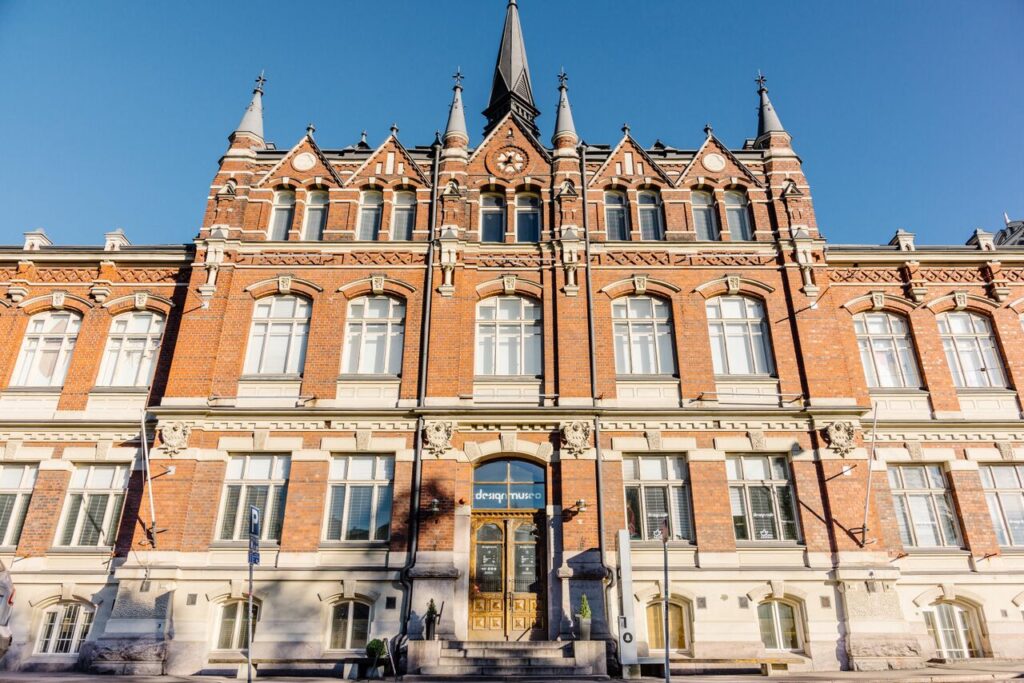
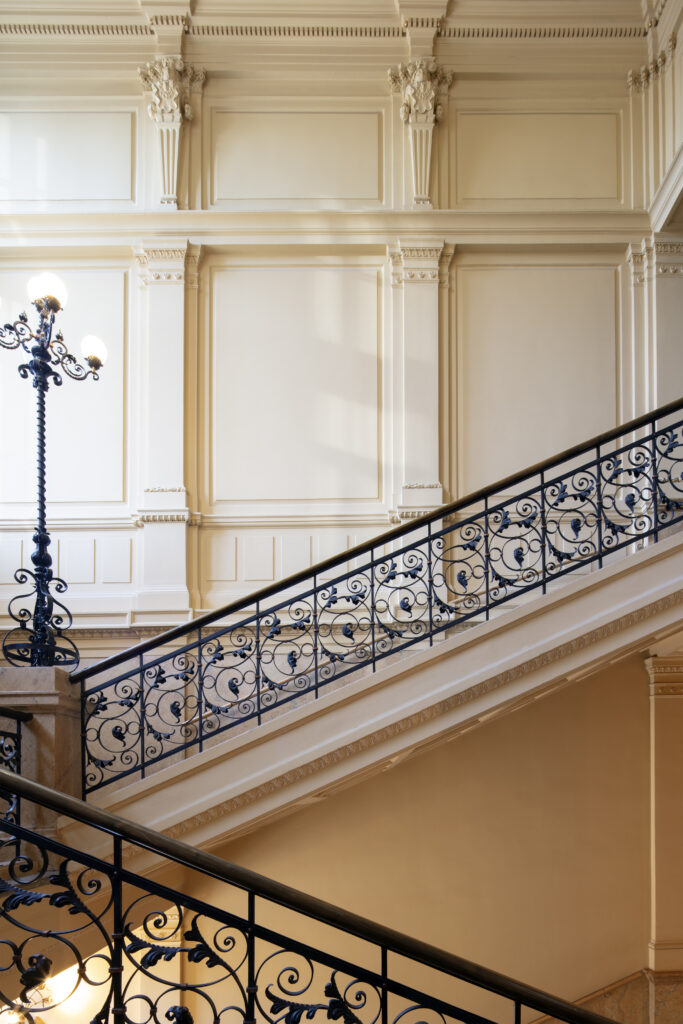
Beautiful Patina – Ugly Dirt?
The FIX exhibition presents various maintenance methods but also challenges the viewer to contemplate what is worth maintaining or repairing in the first place. Museum visitors encounter objects that have aged, become dirty, and worn out during their life.
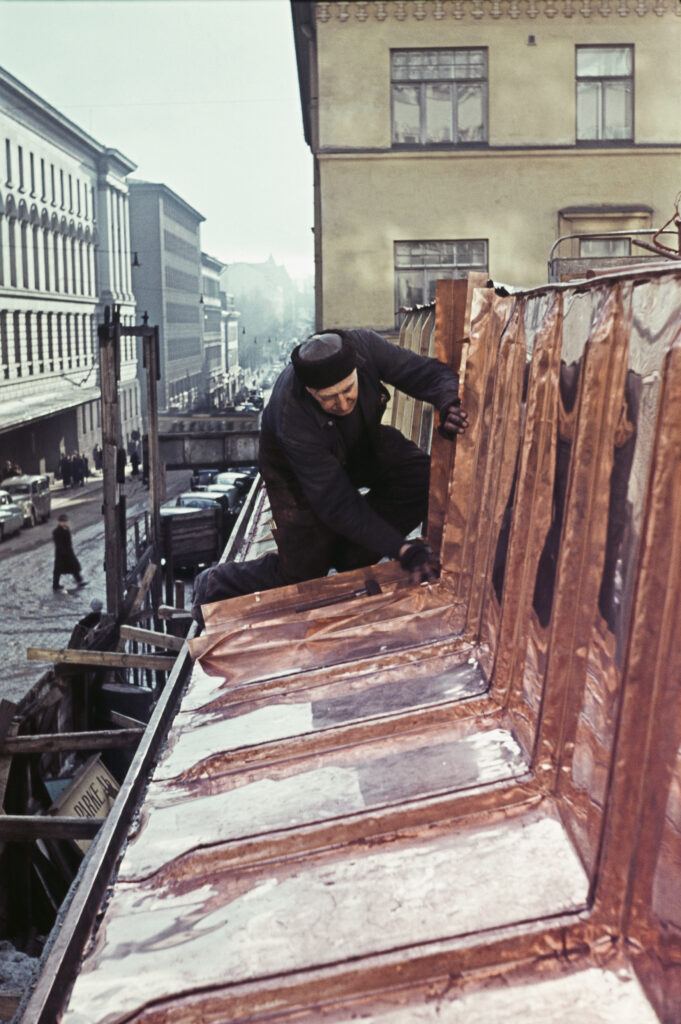
The metal craftsman is working on Porthania’s roof. Photo: Jussi Palmio / Helsinki City Museum
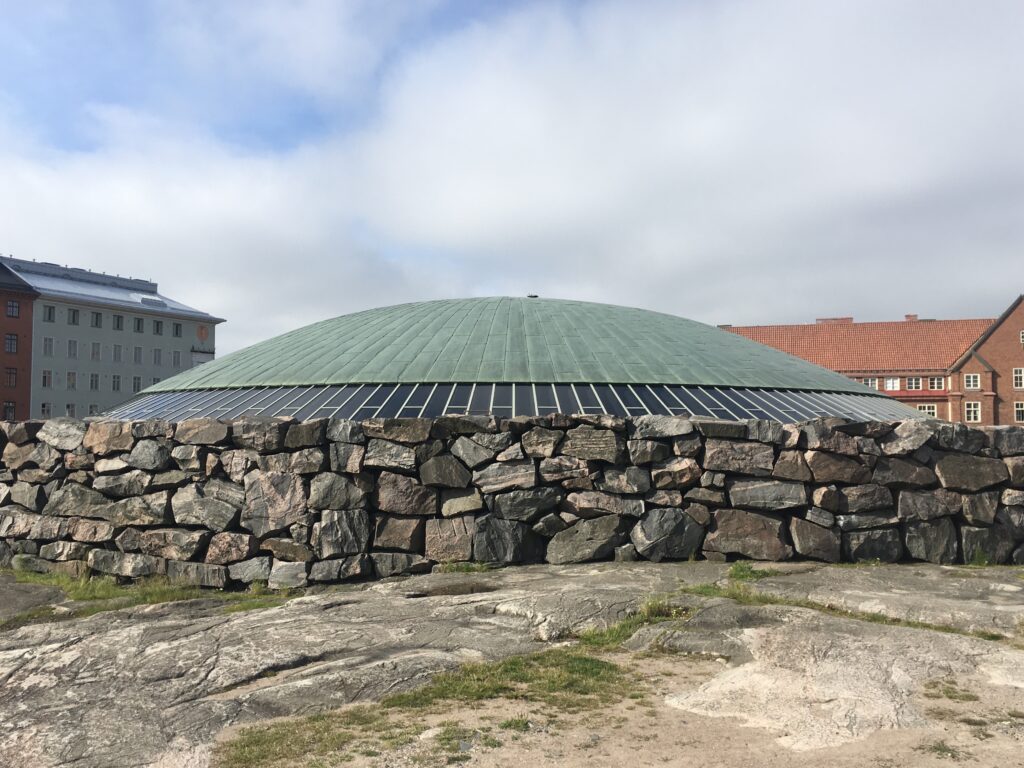
Timo and Tuomo Suomalainen: Temppeliaukio Church, 1969. Photo: Timo Hartikainen / Helsinki City Museum.
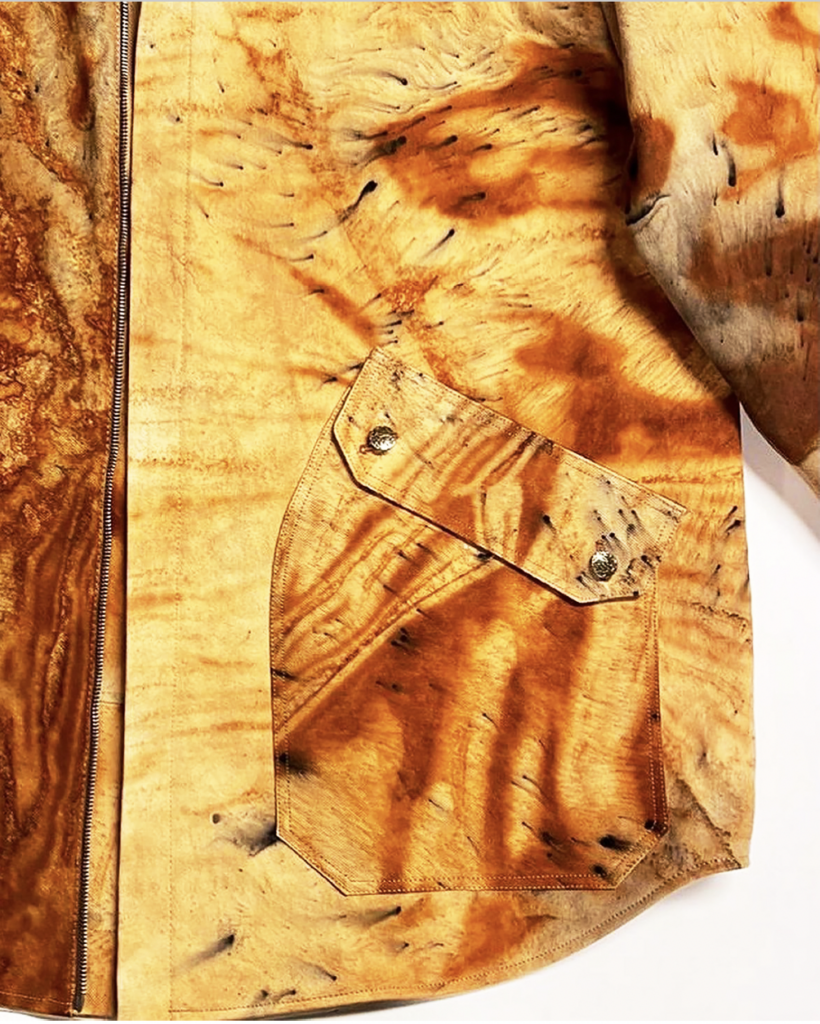
Veerkracht Dialogue: Josien Verwoerd ja Luna Van Kessel: Rust Treatment jacket. Veerkracht Dialogue is an international design team that develops environmentallyconscious and nature-positive contemporary fashion. Rust, which is a sign of degradation of materials and thus evokes negative images, has been turned into a special effect in fashion design. Photo: Luna van Kessel
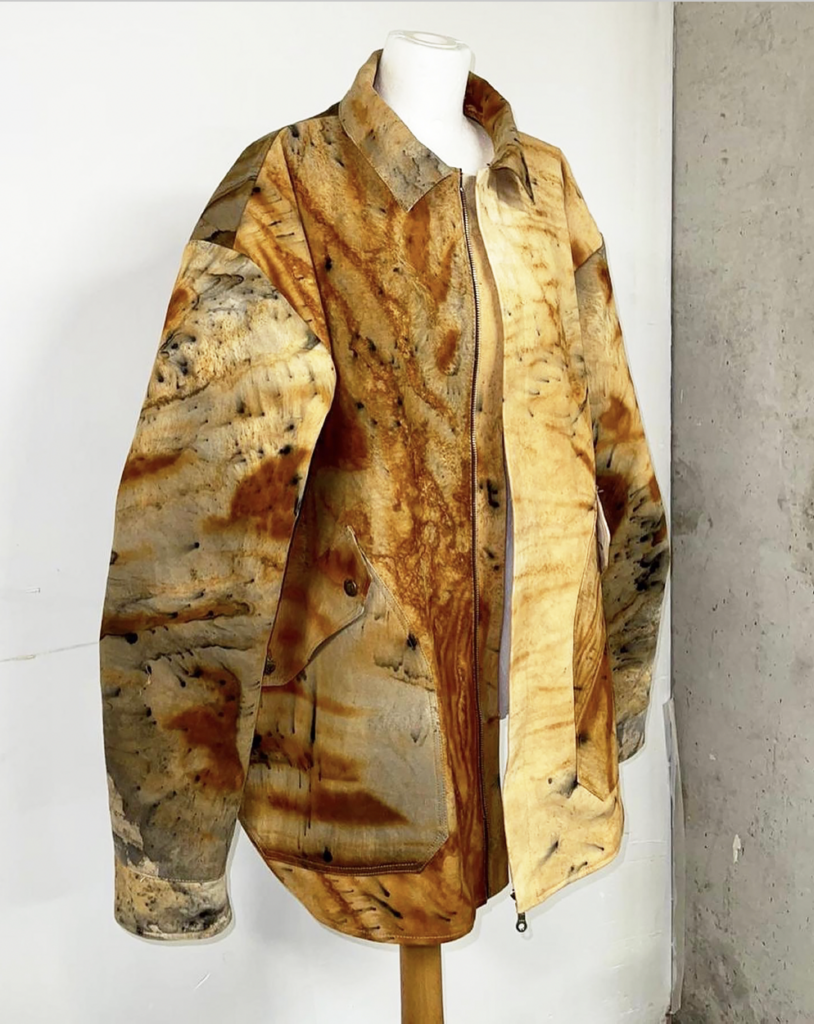
Museums Maintain, Preserve
The primary mission of a museum collection is to endure and preserve, and therefore the relationship between museums and objects is unique. Collection items do not hold utility value like everyday objects; instead, they are preserved and cared for due to their intrinsic value and the knowledge associated with them. By maintaining and repairing their collections, museums sustain cultural history.
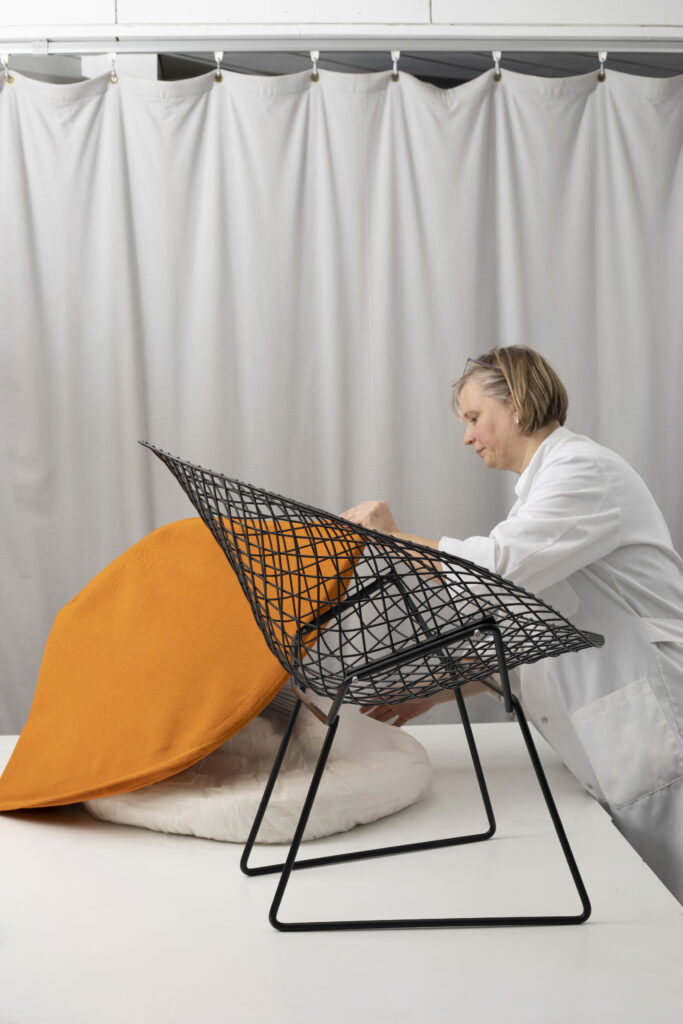
Conservation of the Diamond chair in the collection of the Museum of Finnish Architecture and the Design Museum Helsinki. Chairs designed by Harry Bertoia for Knoll were manufactured under license in Finland from the 1950s. The Diamond chair with a metal frame was conserved by Henna Koskinen in 2023. Photo: Anni Koponen.
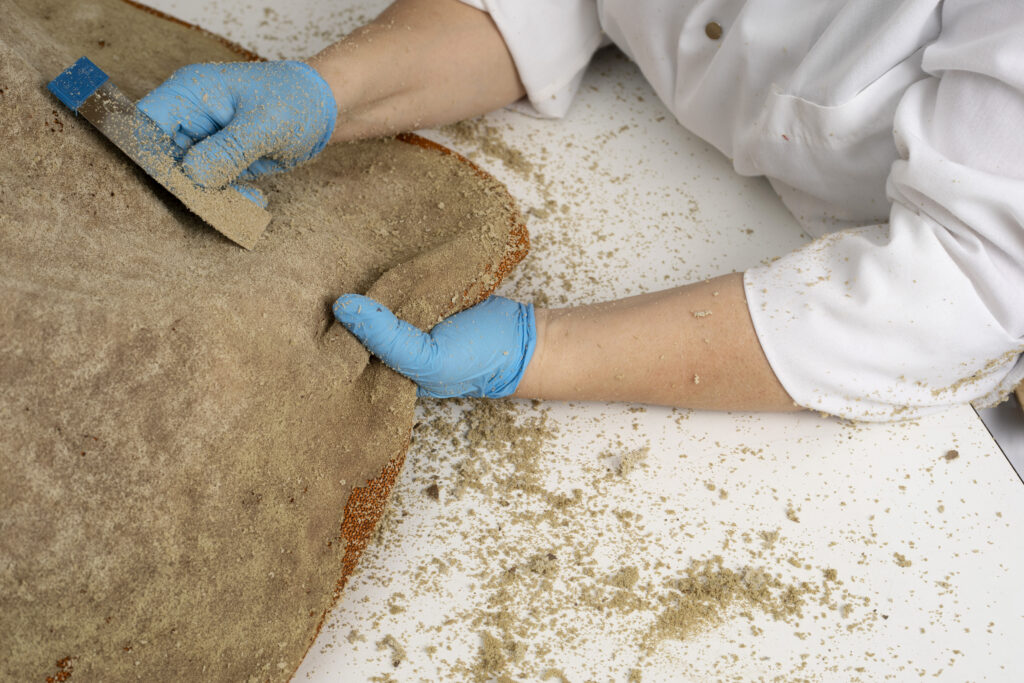
Repairing Challenges the Ideal of Novelty
The exhibition showcases projects of varying complexity, where the focus is on skill and expertise. This includes darning templates from the 1950s, used in schools to teach the citizen skill of
darning. The exhibition seamlessly transitions to the examination of current knowledge dissemination online, featuring the YouTube channel Odd Tinkering as an example. On this channel, an anonymous Finnish repairer restores and maintains old tools, and brings outdated electronics such as gaming consoles, keyboards, and phones back to life.
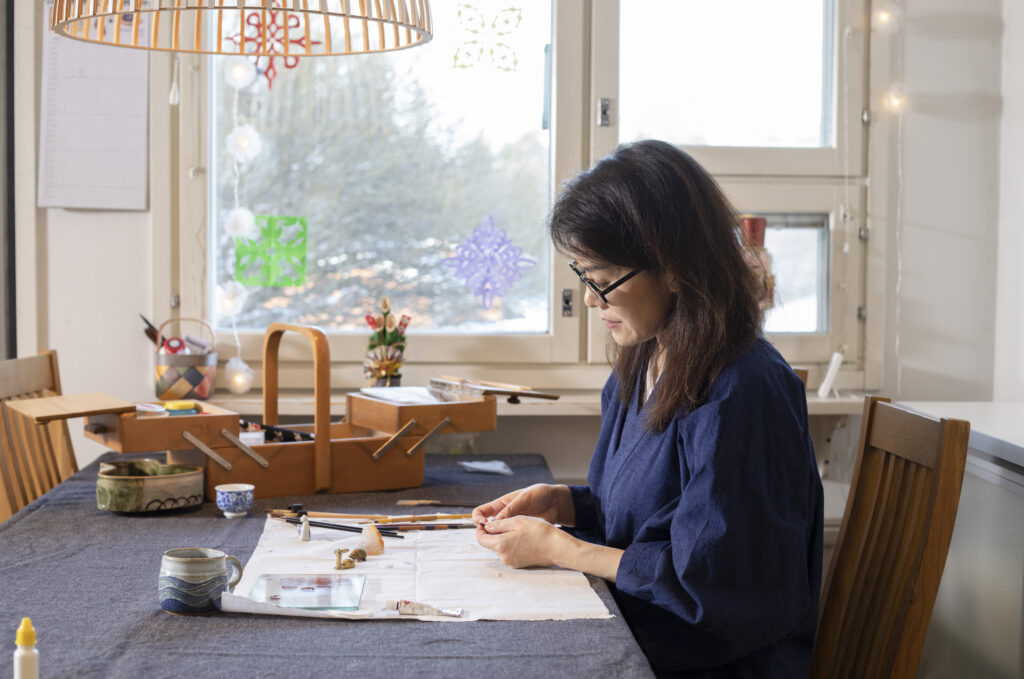
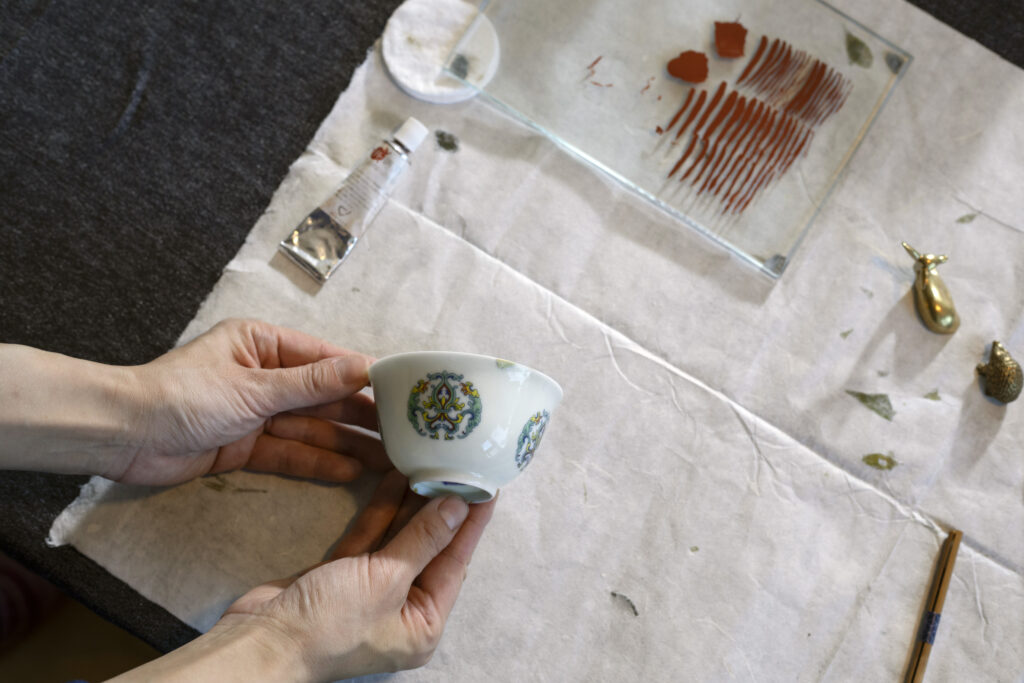
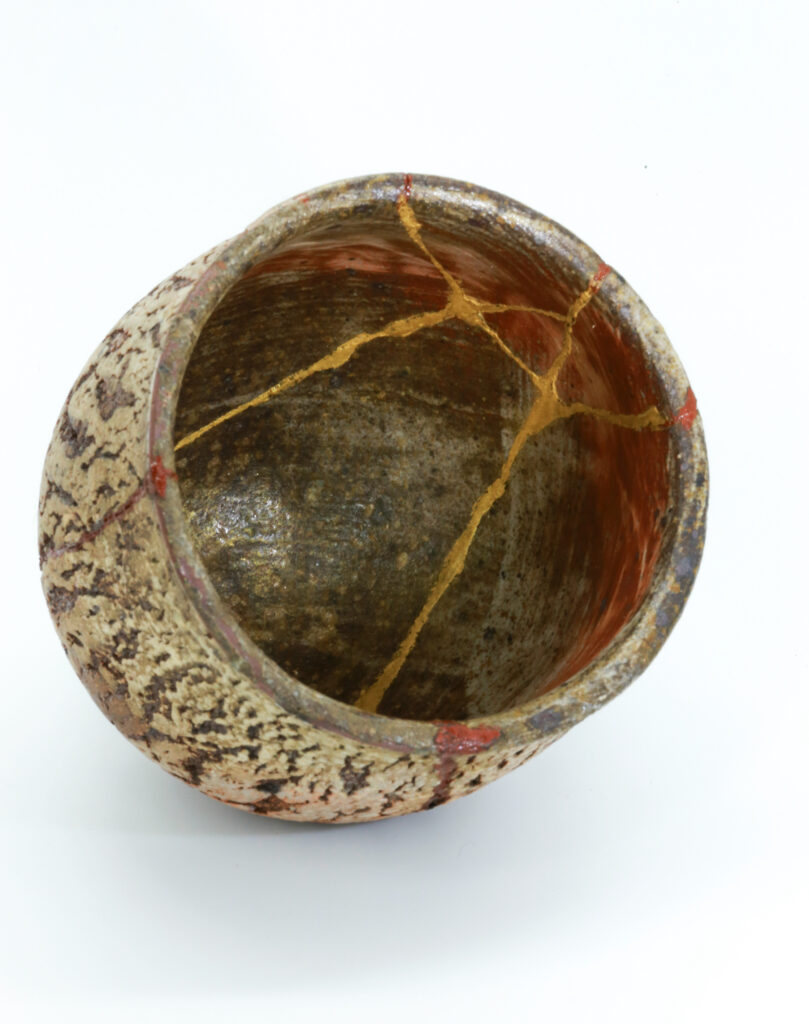
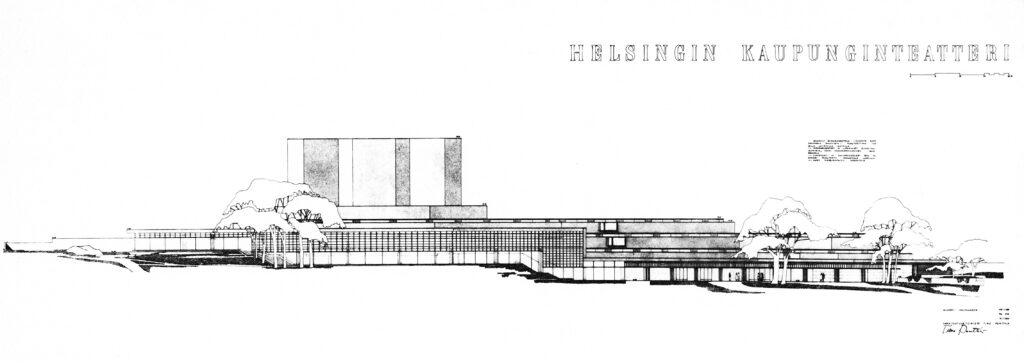
The Helsinki City Theatre designed by architect Timo Penttilä was completed in 1967. After Penttilä retired, he destroyed his drawings archive. However, the drawings for the city theatre were spared, and with their help the building could be renovated. Original drawing: Museum of Finnish Architecture and Design Museum Helsinki.
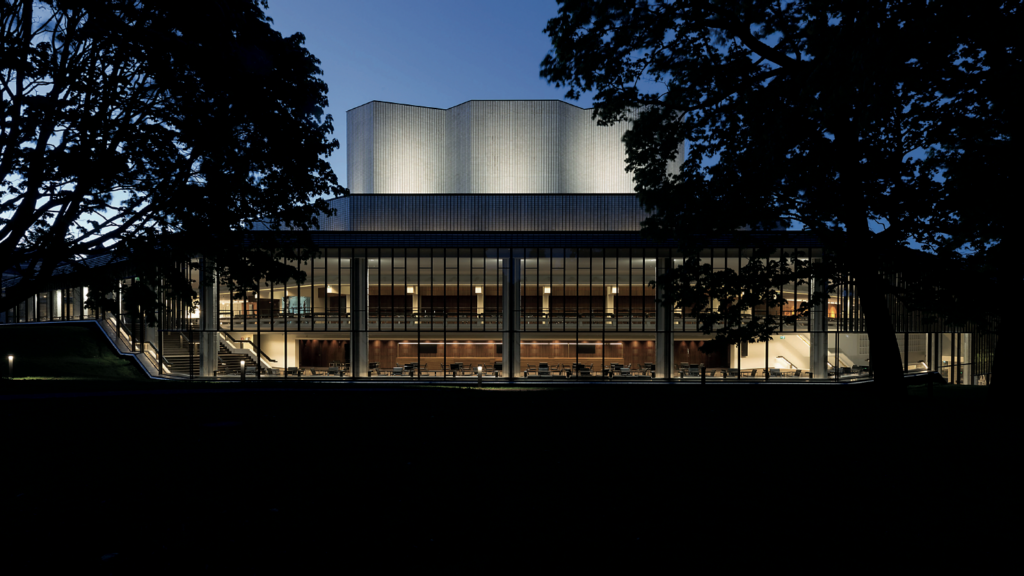
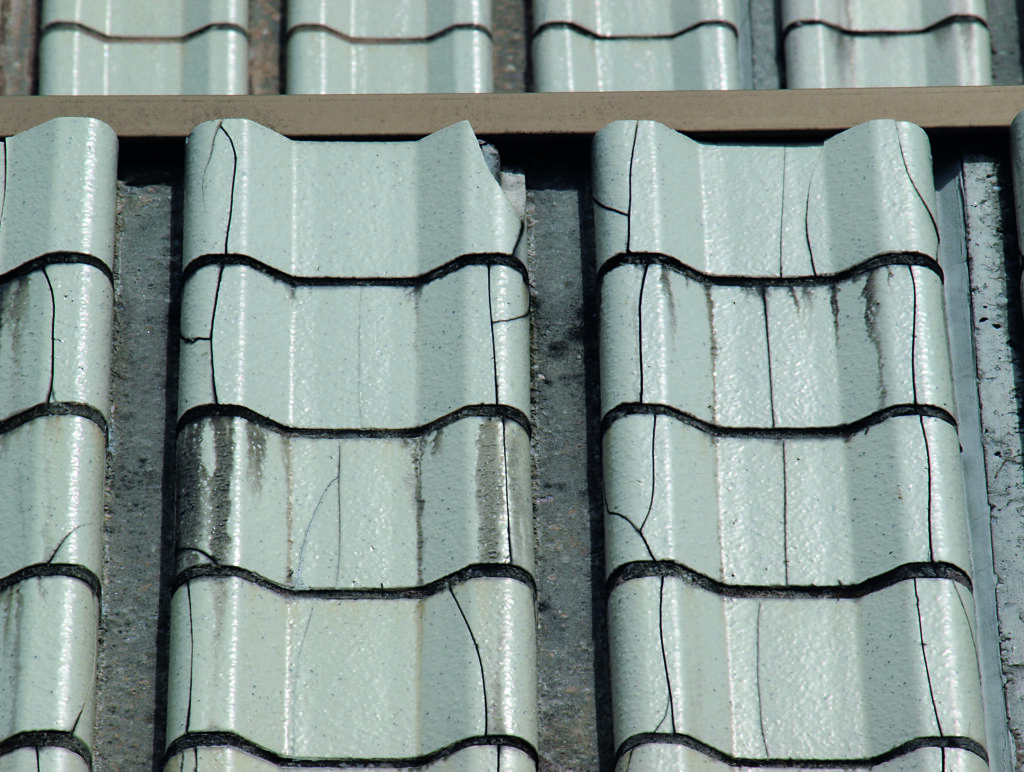
Clean and Maintain with Joy – Hidden from View
Cleaning is a fundamental aspect of the world of architecture and design. The
tools used in cleaning are design products themselves. Cleaning significantly influences the usability,
durability, and our perceptions of the beauty of objects and spaces. However, cleaning work
is often made invisible and done inconspicuously. Often, it takes place out of sight, before the arrival of guests or the morning shift of office workers.
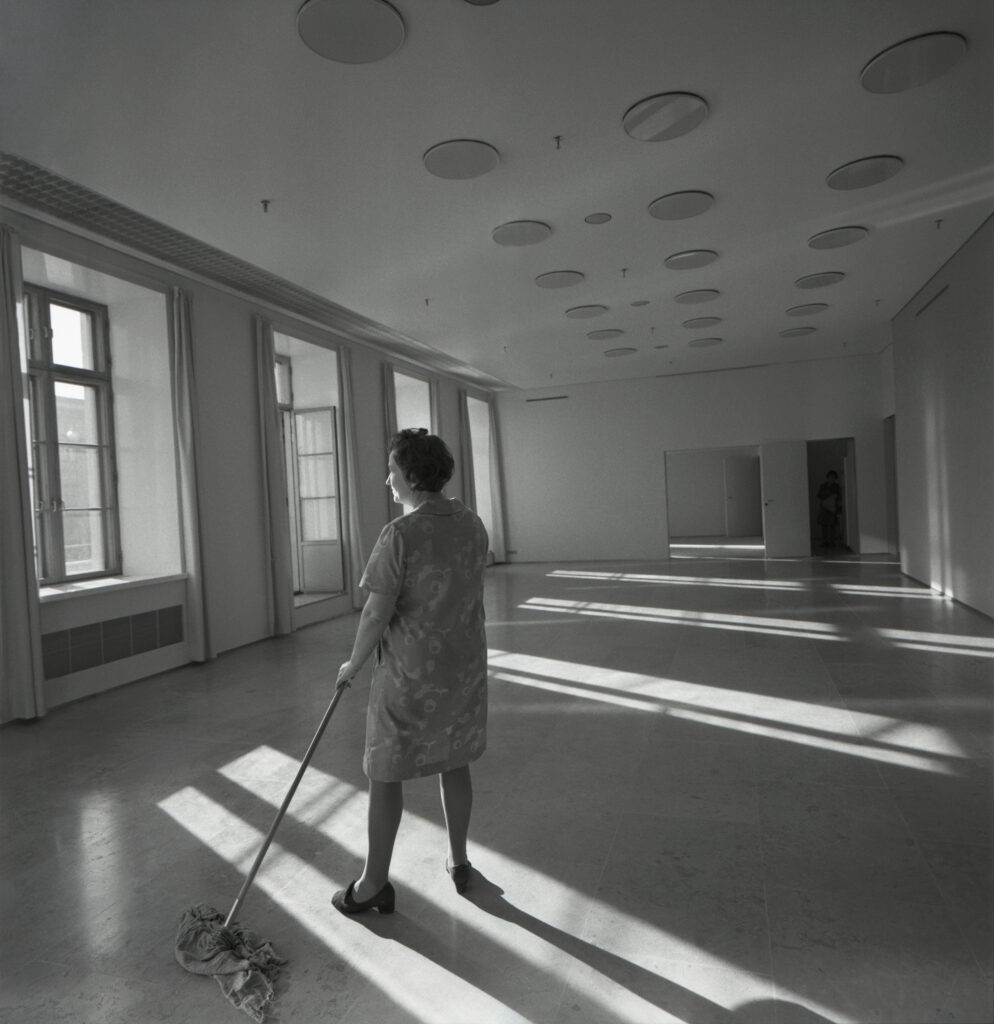
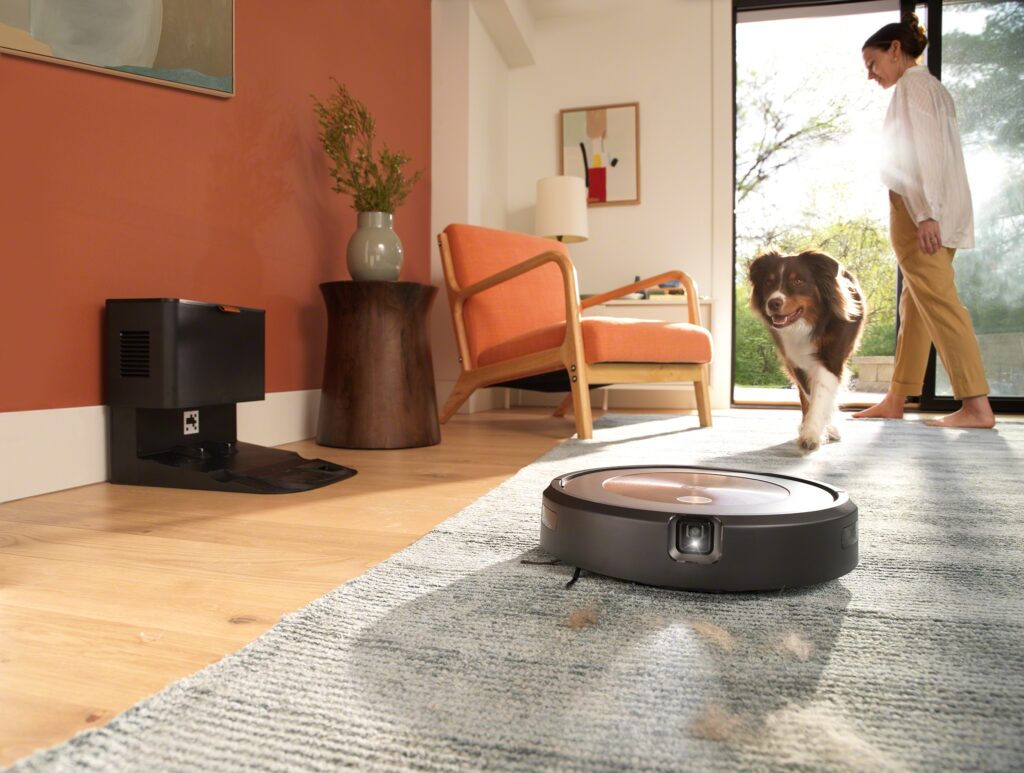
The Roomba J9 robot vacuum cleaner. Photo: Manufacturer.
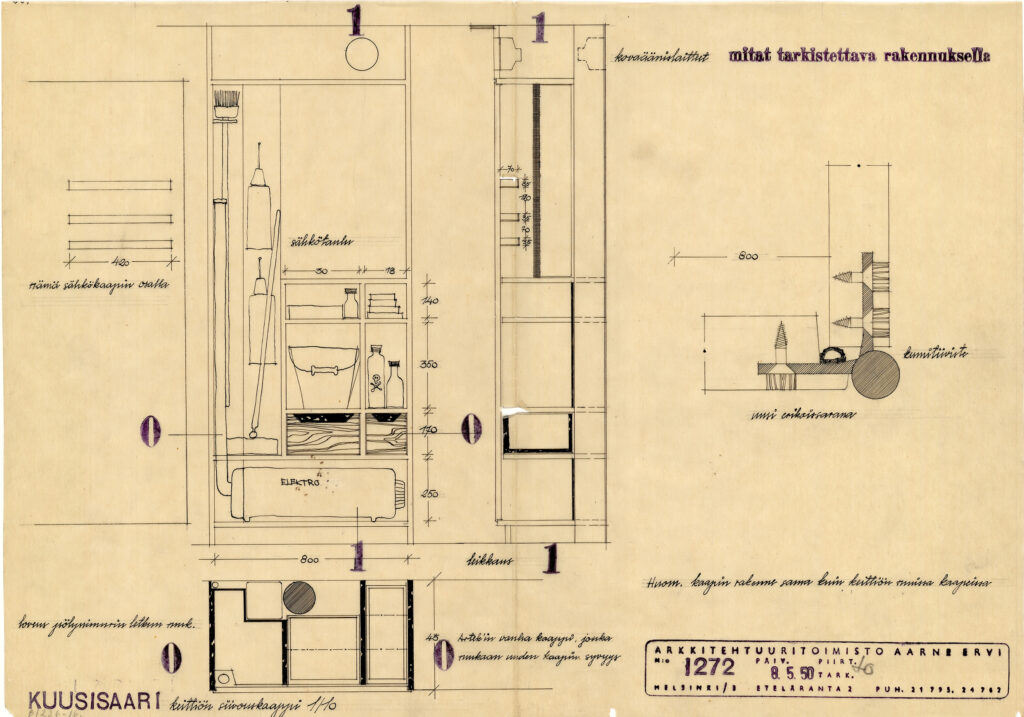
Topics to discuss before/after your visit
- What kind of goods are durable? What makes them durable?
- Why is the aging of some objects seen as valuable patina, while for others, wear and tear are undesirable?
- What objects and things do we invest time and money in caring for?
- What is left outside the scope of care?
- Is an object ruined when its surface is streaked with traces left by cleaning agents? Or does inappropriate surface treatment emphasize the form of the object, guiding the hand that cares for it?
- Do you find cleaning noises disturbing?
- Where are repair and cleaning equipment usually kept?
- What kind of professions can you think of associated with fixing and cleaning?
- Describe, orally or in writing, which exhibit made the biggest impression on you during the museum visit.
- What did I learn at the exhibition? What kind of new ideas did you get?
For more information, please contact:
Hanna Kapanen
Museolehtori
+358 50 301 6838
hanna.kapanen@designmuseum.fi
